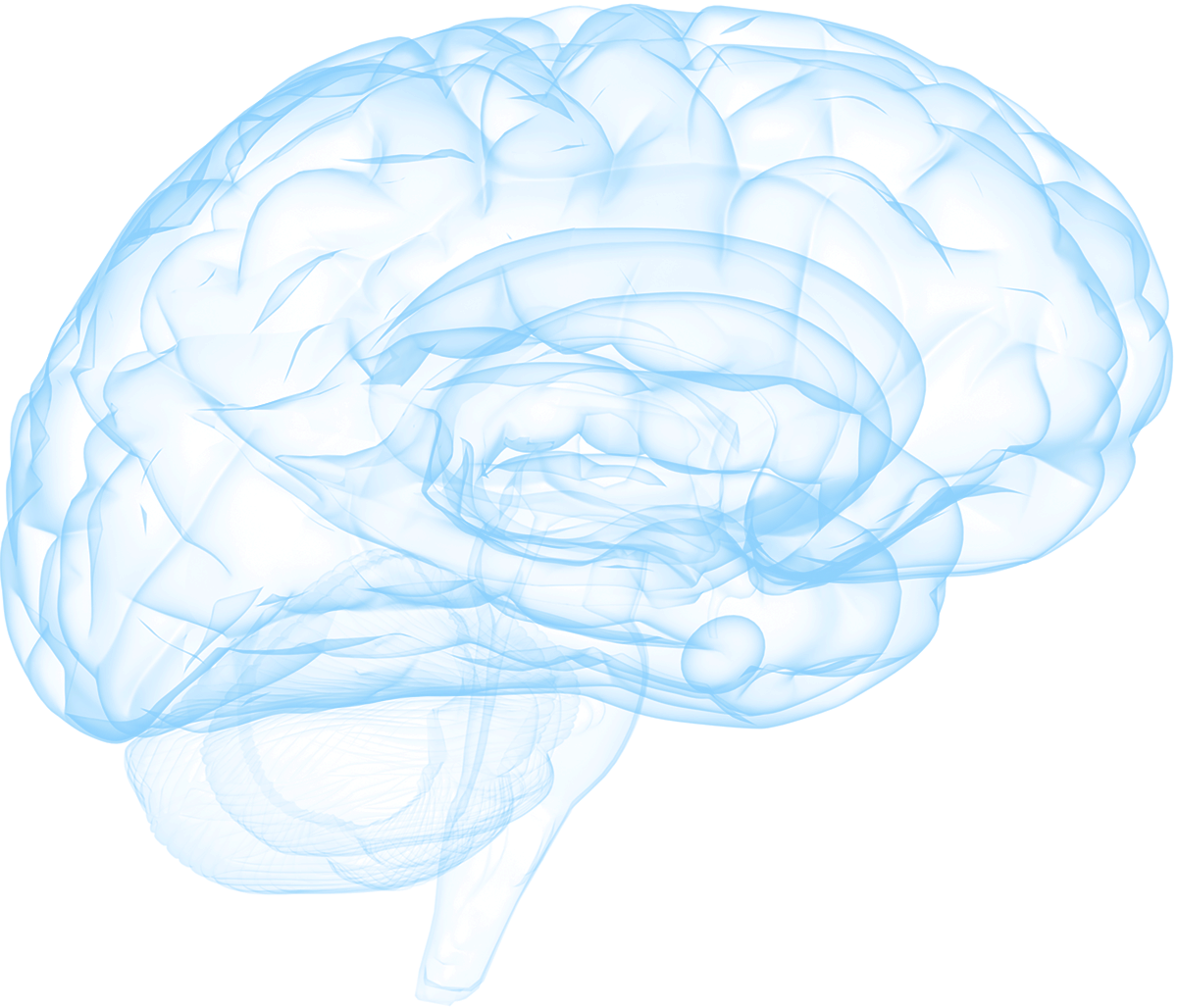


Neuroscience + Psychology
There is emerging evidence that compounds with psychedelic activity have the capacity to be catalysts for transformative improvement in mental functioning.
Rather than ameliorating distressing symptoms, MindMed is developing psychedelic inspired medicines that seek to treat underlying causes of distress in the brain.
Neuroplasticity
To understand the concept of neuroplasticity, which refers to changes in neurons in the brain, it is important to recognize that the development of memories, habits, and skills require functional and structural change in the brain. In fact, our brains are constantly changing throughout our lives. Neuroplasticity in the context of treatment refers to the brain’s ability to create, organize, and reorganize connections between neurons.
Negative plasticity
Negative brain plasticity refers to changes in neuronal connections in the brain that can be harmful to our internal experience and functioning[1]. This can occur with harmful experiences such as trauma, stress, and substance misuse[2,3,4]. These damaging changes to neuronal connections are observed in anxiety, depression, substance use disorders, and PTSD[4].
In anxiety, negative plasticity occurs when the brain creates associations between disparate experiences and the brain’s fight-or-flight-reactions, which include body experiences such as rapid heartbeat and sweating, along with mental experiences like fear and panic that commonly accompany anxiety[5].
In depression, the prefrontal cortex, the area of the brain that helps regulate emotions, can demonstrate diminished functioning, leading to fewer experiences of states such as happiness and motivation[6].
Positive plasticity
One feature of the human brain is that the very connections and pathways that can be negatively changed may also be positively changed by these same mechanisms. This means that negative changes in the brain due to anxiety, addiction, PTSD, and depression could be a good target for treatment by creating more positive associations[7,8].
Psychedelics are a catalyst for plasticity
Serotonergic psychedelics such as LSD, psilocybin, and DMT increase the creation of new neurons and parts of neurons (neurogenesis and spinogenesis) and connections between neurons (synaptogenesis)[4], which facilitates increased communication between neurons. Evidence suggests that while under the influence of psychedelics, the brain shows increased connectivity, including connections between areas of the brain that aren’t normally directly connected[8]. This process may help to reverse some degree of the changes that result from negative experiences, depression, anxiety, PTSD, and substance misuse[1,7,8].
The Experience of Psychedelics
In addition to positive plasticity, there are also experiential aspects of the psychedelic experience that have been postulated to help facilitate healing. This experience has been described as lowering metaphorical protective walls and reducing defensive, anxious, and fight or flight-like protective responses[8]. Psychedelics transiently affect the brain so that one may be more open to novel emotions, experiences and thoughts, in a meaningful way[8,9]. Individuals who have undergone psychedelic therapies have reported experiencing “a kind of quieting of the voices in our heads”[9].

While there are many therapeutics and a variety of therapies that are currently available to people in distress, such as antidepressants and psychotherapy, that save lives and work well for many people, these interventions often take weeks to show benefit and have potential negative side effects such as increased anxiety, insomnia, nausea, headaches, and sexual dysfunction[10]. Our hope is that the novel therapeutics under development offer patients additional options for treatment that may offer benefits over existing treatments, and may in some cases be used in conjunction with existing treatments.
Psychedelic treatments may show positive effects beginning as quickly as the day of treatment[11], and have shown maintenance of these effects for several months. Some individuals even achieve full remission[12,13]. Psychedelic treatments have also been well-tolerated without major side effects in the studies that have been conducted up to this point[11,13].
- Vance, D. E., Roberson, A. J., McGuinness, T. M., & Fazeli, P. L. (2010). How neuroplasticity and cognitive reserve protect cognitive functioning. Journal of Psychosocial Nursing and Mental Health Services, 48, 23-30. Doi: 10.3928/02793695-20100302-01
- Bremner, J. D. (2006). Traumatic stress: effects on the brain. Dialogues in Clinical Neuroscience, 8, 445-461.
- Kosten, T. R. & George, T. P. (2002). The neurobiology of opioid dependence: Implications for treatment. Science & Practice Perspectives, 1, 13-20. doi: 10.1151/spp021113
- Ly, C., Greb, A. C., Cameron, L. P., Wong, J. M., Barragan, E. V., Wilson, P. C., Burbach, K. F., Zarandi, S. S., Sood, A., Paddy, M. R., Duim, W. C., Dennis, M. Y., McAllister, A. K., Ori-McKenney, K. M., Gray, J. A., & Olson, D. E. (2018). Psychedelics promote structural and functional neural plasticity. Cell Reports, 23, 3170-3182. doi: 10.1016/j.celrep.2018.05.022
- Radley J, Morilak D, Viau V, Campeau S. Chronic stress and brain plasticity: Mechanisms underlying adaptive and maladaptive changes and implications for stress-related CNS disorders. Neurosci Biobehav Rev. 2015;58:79-91. doi:10.1016/j.neubiorev.2015.06.018
- Rădulescu, I., Drăgoi, A.M., Trifu, S.C., & Cristea, M.B. (2021). Neuroplasticity and depression: Rewiring the brain’s networks through pharmacological therapy (Review). Experimental and Therapeutic Medicine, 22, 1131. Doi: 10.3892/etm.2021.10565
- Krystal, J. H., Tolin, D. F., Sanacora, G., Castner, S., Williams, G., Aikins, D., Hoffman, R., & D’Souza, D. C. (2009). Neuroplasticity as a target for the pharmacotherapy of anxiety disorders, mood disorders, and schizophrenia. Drug Discovery Today, 14, 690-697. doi: 10.1016/j.drudis.2009.05.002
- Carhart-Harris, R. L. (2016). Psychedelics: Lifting the veil [Video file]. Retrieved from https://www.youtube.com/watch?v=MZIaTaNR3gk&t=788s
- Koch, S. & Jones, C. (Producers). (2020). 60 Minutes: Psilocybin sessions: Psychedelics could help people with addiction and anxiety. [Television Broadcast]. CBS News.
- What are the real risks of antidepressants? (n.d.). Harvard Health Publishing. Retrieved from https://www.health.harvard.edu/mind-and-mood/what-are-the-real-risks-of-antidepressants
- Romeo, B., Karila, L., Martelli, C., & Benyamina, A. (2020). Efficacy of psychedelic treatments on depressive symptoms: A meta-analysis. Journal of Psychopharmacology, 1-7. doi: 10.1177/0269881120919957
- Carhart-Harris, R. L., Bolstridge, M., Rucker, J., Day, C.M.J., Erritzoe, D., Kaelen, M, Bloomfield, M, Rickard, J.A., Forbes, B., Feilding, A, Taylor, D., Pilling, S., Curran, V.H., & Nutt, D. J. (2016). 7Psilocybin with psychological support for treatment-resistant depression: an open-label feasibility study. Lancet Psychiatry, 3, 619-627. Doi: 10.1016/52215-0366(16)20065-
- Fuentes, J. J., Fonseca, F., Elices, M., Farré, M., & Torrens, M. (2020). Therapeutic use of LSD in psychiatry: A systematic review of randomized-controlled clinical trials. Frontiers in Psychiatry, 10, 1-14. doi: 10.3389/fpsyt.2019.00943